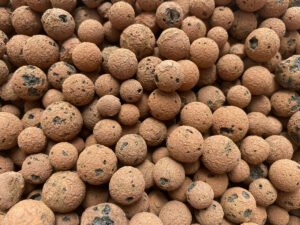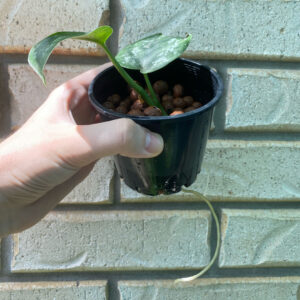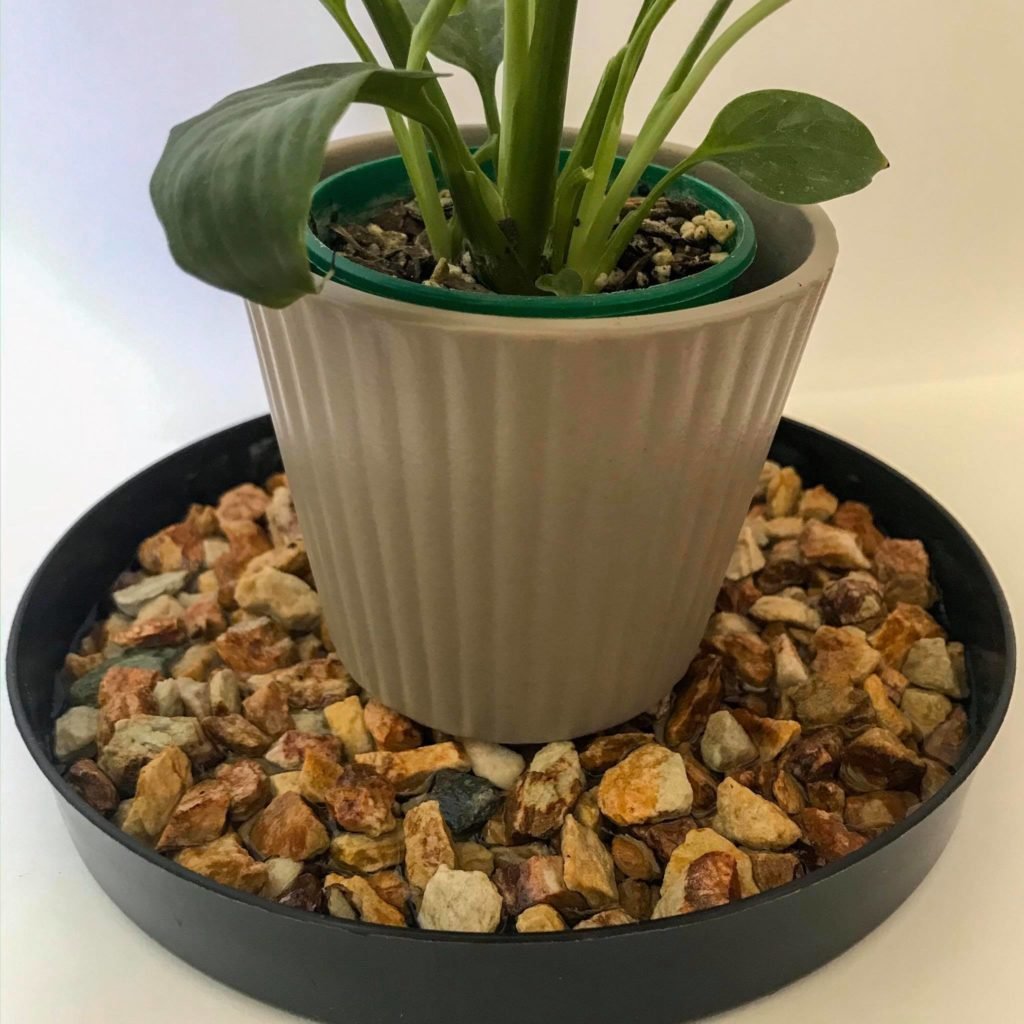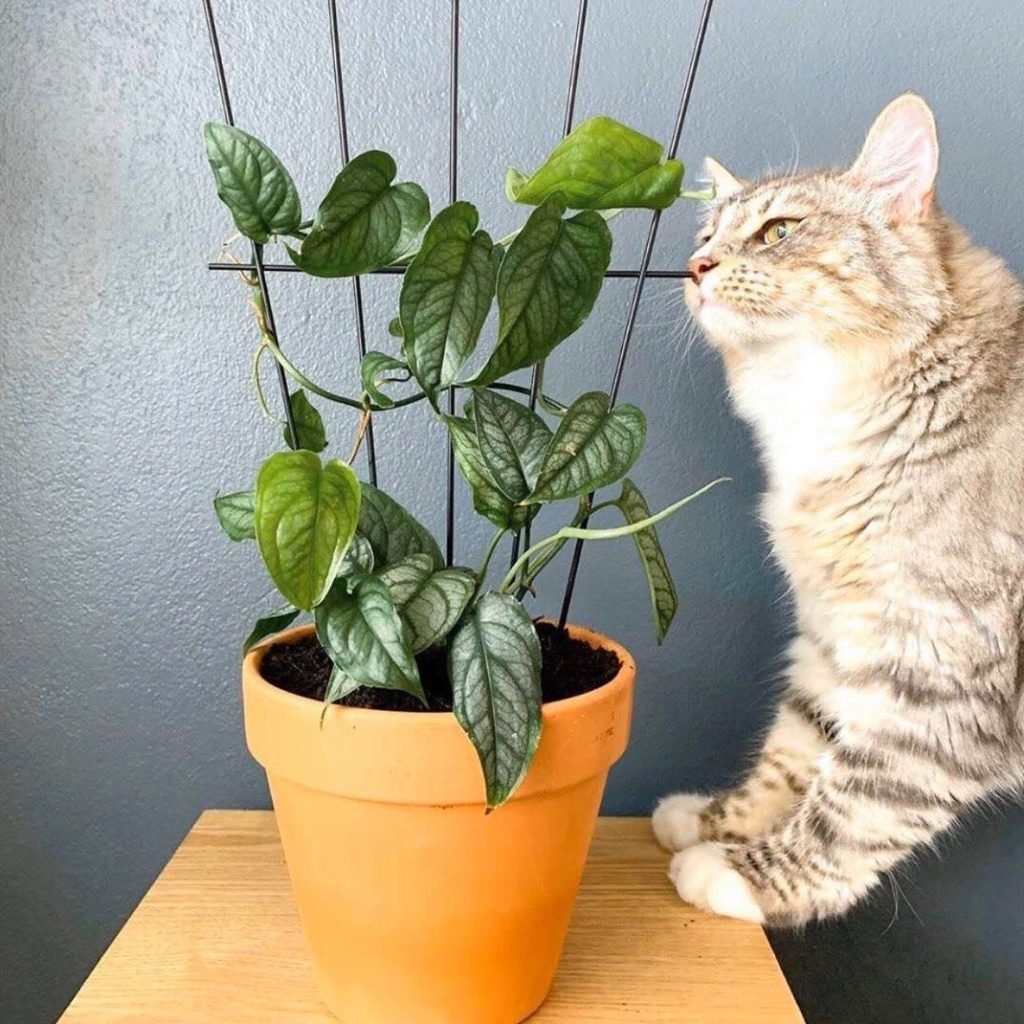
What is leca?
The term LECA stands for Lightweight Expanded Clay Aggregates. They are small, round, brown balls and are available in different sizes for various applications. As a growing medium, the typical size is between 4-10mm (0.15-0.4 inch). These light porous balls are commonly used in horticultural applications and water purification processes.
For plant use, leca is a great way to alter soil chemistry to benefit plants or as its own growing medium. It works best for plant growth when used in aquaponics and hydroculture applications.
How is Leca made?
Leca is made from small clay pellets that are placed inside a 1,200 °C (2,190°F) rotating kiln. The extreme temperatures cause the clay pellets to expand 5 times in size and form thousands of pores. This is caused by the gases trapped inside escaping the clay pellets from the heating process. The rotating kiln gives the leca its smooth round shape, similar to making a ball in your palms.
Benefits of Leca
Leca makes an excellent growing medium for a multitude of reasons. It’s a great growing medium for developing plants and full grown plants alike and the biggest benefits are outlined below.
Ability to check on your plants
Unlike typical growing mediums like soil; one of the advantages of growing indoor plants in leca is the increased visibility of the plant’s root system. This allows you to better monitor your plants root health and help in the early detection and treatment of root diseases like fungal based root rot.
Easier to propagate plants
Propagating using leca is very similar to water propagating, with plants having constant access to water. However, there are some benefits to using leca instead of just water. It has the ability to give the plants roots constant access to water without requiring to be submerged, which makes it a great alternative. Leca acts as capillaries to transport water and nutrients to the roots (similar to water being absorbed up a sponge).
With water propagation, indoor plant cuttings are more exposed to rotting with the lack of oxygen being the main culprit. Leca’s properties mitigates this risk with greater access to oxygen.

Reusable
Leca is a great sustainable way to grow multiple plants over long periods of time because it can be reused. When reusing LECA, it will need to be washed prior to reuse to ensure there is no transfer of potential pests/ diseases. Rinsing will also assist in removing any built up organic matter. You can reuse leca immediately or it can be dried and stored for future applications.
High in oxygen
Due to the manufacturing process, leca is extremely porous which aids in its ability to capture and hold oxygen. This is great for your plants roots and helps mitigate the risk of root diseases like root rot.
Leca also doesn’t decay or compact over time, which occurs in organic based soils from decomposition. This helps maintain a healthy air flow to the root system and provides ample oxygen to the plants root system.
Disadvantages of Using Leca
Although Leca is a great growing medium for indoor plants, there are a few disadvantages to be taken into consideration. These disadvantages mostly have to do with the equipment and costs. The disagvantages have been outlined below.
Not suitable for all pots
Since leca has the inability to hold nutrients (like organic based soils), the type of pot needs to be taken into consideration. You need to use pots and vessels that have no drainage holes. This allows water and nutrients to be readily available for your plant, in turn promoting healthy plant growth. You can use any style of pot as long as they have the ability to contain water.
Requires Additional Fertilizers
With leca containing no nutrients naturally, for your plants to thrive you will need to supplement the growing medium with additional liquid nutrients/ fertilizers. Alternatively similar to aquaponic systems, using water containing fish waste is a cheaper alternative to purchasing nutrients. However, this is not specially formulated and results can vary drastically.
Upfront Costs
Leca is one of the most expensive upfront growing mediums for indoor plants. The typical price is $12-$15 for 2lb, which is relatively high in comparison to indoor plant specific soils.
You will also need to factor in the costs of liquid fertilizers and/or nutrients. The upfront costs don’t factor in it’s ability to be reused which significantly reduces overall long term costs when used for multiple plants. To reduce long term costs it is almost always cheaper to buy in bulk. For up to date pricing check here.
How to Use leca
Washing Leca
When you first get your leca, if not prewashed, you will find that it is very dusty. The dust is typically just left over clay particulates from the manufacturing process. Although it is not technically harmful to your plants, it holds no nutrient value and makes for a bad look dirtying the water.
The best way to clean new leca is to put under running water for several minutes until the water begins to pass through clear. Next let them soak fully submerged in water from 2 – 12hrs (or overnight). The soaking process is important as this time allows the porous clay balls to begin absorbing water. This benefits the plants giving them immediate access to water once transplanted.
How much water do plants need in leca?
As a rule of thumb, 1/3 of the container should be filled with water. This gives your plants an abundance of water whilst maintaining high oxygen levels. As your plants roots grow, they will develop ‘fluffy’ white roots where they are completely submerged. These are known as ‘water roots’ and are perfectly healthy.
Watering Frequency
You should top up the water or change it when the water level drops by half. This should be approximately around 3-4 weeks but is subject to change depending on positioning and time of year. Ideally, the water should be topped up to the 1/3 mark.
Using Fertilizers
Like previously mentioned, leca contains no nutrients. This means that additional fertilizers and nutrients will be required. Liquid based fertilizers and nutrients are the best option as they easily dilute in water. For general use, hydroponic fertilizers are acceptable, however there are some indoor plant specific fertilizers which are more ideal.


